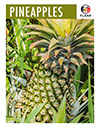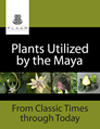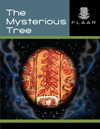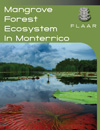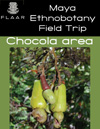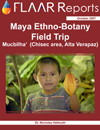DOWNLOAD |
During January 2015 one of the FLAAR botany study team was climbing a volcano near Antigua, Guatemala, and she noticed a Canak tree (manitas, Chiranthodendron pentadactylon, also spelled Canac). This tree has a bizarre-shaped flower which is still sold in local markets for medicinal use. A thousand years ago this flower was also used as an ingredient in variants of cacao beverages by the Maya and Aztec.
|
Chiranthodendron pentadactylon
|

Chiranthodendron pentadactylon
|
After hearing of the canak trees, we drove to the volcano base and climbed an hour or so to the elevation where the canak trees grew. In the village where you park your cars I noticed one of the sheds of the parking lot was roofed with a grass-like straw. This reminded me of the ak used for roofing (by the Q'eqchi' Mayan people) in areas of Alta Verapaz and adjacent Izabal.
While hiking down the volcano (after photographing several canak trees), I asked to take a different route than we had climbed up. Out of sheer luck this alternate trail led by several large clumps of tall grass.

Chiranthodendron pentadactylon
|
The guide had already noticed my interest in plants in general and thatch in particular, so he stopped at the grass and mentioned that this was the grass the local Mayan people used for straw thatch in the Acatenango area. He said the name in the local language was k'im (pardon my lack of linguistic finesse, as I did not have a take recorder). But this must be close, as in another Highland Mayan language, Mam the word for straw is ch'im kchil ch'im - tall grass used in roofing.
www.lrc.salemstate.edu/mam/mamdictionary.pdf

Grass used to thatch houses
|
Nowadays there are not many houses using grass thatch, one reason being that when kids set off fireworks on birthdays and public holidays, some firecrackers shoot up, or fall down, onto a thatch roof, setting an entire house on fire. Plus a tin roof and concrete block walls are conceived of as higher status for many local people than wooden pole walls and a thatch roof.
Every individual has the right to have their house the style and material they prefer, but it is helpful to record the traditions of pre-industrial cultures. Grass today is ironically considered very eco-friendly and very chic for elite boutique hotels.

Grass used to thatch houses
|
Here is the start of a linguistic comparison of names of thatch grass
|
Q'EQCHI' |
KAKCHIQUEL |
KAKCHIQUEL var. |
Español |
English |
|
AK |
K'im |
K'in |
Paja |
Grass |
Posted January 30, 2015.









